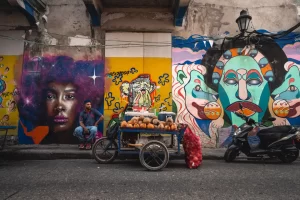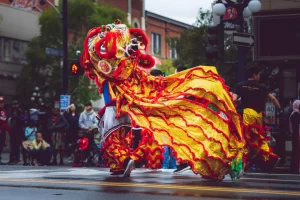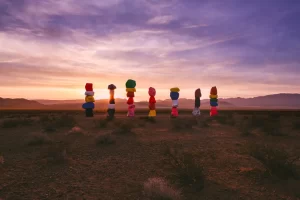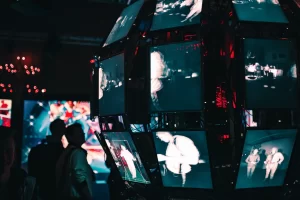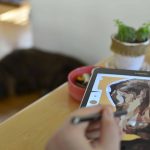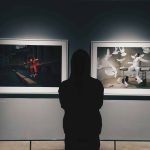Introduction to Cultural Exchange in Art
Cultural Exchange in Art: Bridging Generations Through Creativity
In today’s globalized world, the interconnectedness of cultures is more apparent than ever. Cultural exchange plays a pivotal role in fostering understanding and appreciation among diverse communities. One powerful medium that transcends linguistic boundaries and facilitates this exchange is art. This article explores the significance of cultural exchange in art across into its various dimensions and the evolving landscape.
For those seeking to actively engage in cross-cultural artistic exploration, it is essential to participate in international art festivals and collaborative projects. Embracing diverse perspectives not only broadens artistic horizons but also contributes to a more inclusive global artistic community. Stay tuned as we delve deeper into specific examples of cross-cultural artistic initiatives and the transformative power they hold.
Introduction to Cultural Exchange in Art: An Overview
Cultural exchange is the dynamic interplay of ideas, traditions, and values between different societies. In the contemporary context, where globalization has brought the world closer, the importance of understanding and appreciating diverse cultures cannot be overstated. Art, as a form of expression, holds a unique position in this landscape. It has the extraordinary ability to communicate emotions and experiences universally, creating a bridge between cultures.
As the world becomes increasingly interconnected, individuals and communities are presented with the opportunity to explore and celebrate the richness of global diversity through artistic endeavors. This interconnectedness allows for the cross-pollination of creative ideas, leading to the evolution of artistic forms that transcend geographical boundaries.
Artists serve as cultural ambassadors, using their creations to break down stereotypes, foster mutual respect, and build a shared sense of humanity.
Furthermore, the democratization of art through digital platforms has amplified the reach of cultural exchange.
Social media, online galleries, and virtual exhibitions provide a global stage for artists to showcase their work, fostering cross-cultural dialogue on an unprecedented scale. This digital dimension enhances accessibility, enabling a broader audience to engage with diverse artistic expressions and contribute to the ongoing conversation surrounding cultural exchange.
Ways Art Facilitates Cultural Exchange
Exposure to Different Cultures
Artworks serve as windows into the rich tapestry of diverse perspectives, traditions, and beliefs. From traditional paintings to modern installations, art provides a tangible connection to unfamiliar cultures, fostering appreciation and understanding.
By immersing oneself in the visual narratives and symbolism of artworks from various cultures, individuals gain insights into the historical, social, and spiritual dimensions that shape these societies. This exposure not only broadens perspectives but also creates a platform for dialogue, where cultural nuances are celebrated rather than misunderstood.
Shared Experiences
Engaging with art transcends cultural boundaries, evoking universal emotions and experiences. Whether through the strokes of a brush or the notes of a melody, art creates a shared language, fostering connections and breaking down cultural barriers.
The emotional resonance of art allows individuals from diverse backgrounds to find common ground in shared human experiences. Whether expressing joy, sorrow, or resilience, art creates a universal thread that binds people together, emphasizing our shared humanity.
Challenging Preconceptions
Art has the power to challenge preconceived notions by presenting unfamiliar perspectives. It sparks critical thinking by encouraging viewers to question assumptions and promoting cultural inclusivity by dispelling stereotypes.
Through thought-provoking imagery and unconventional artistic expressions, art challenges the status quo, encouraging viewers to reevaluate their beliefs and biases. This process of challenging preconceptions fosters a more open-minded and inclusive approach to understanding different cultures, paving the way for a deeper and more meaningful exchange.
Building Bridges and Promoting Dialogue
Artistic collaborations and exchange programs act as platforms for intercultural understanding. Through joint creations, artists from different backgrounds contribute to a global dialogue, promoting diplomacy and conflict resolution.By actively participating in artistic collaborations, artists become ambassadors of cultural exchange, building bridges between communities. This shared creative process not only celebrates diversity but also promotes dialogue, understanding, and the recognition of our interconnectedness as a global society.These collaborative initiatives transcend political and social barriers, fostering a sense of unity and shared responsibility for shaping a harmonious future.
Historical Context of Art in Cultural Exchange
Throughout history, cultural exchange has shaped the trajectory of art. From the Silk Road connecting the East and West to the impact of colonialism and the contemporary forces of globalization, art has been a reflection of societies in flux. Notable art movements and specific works have left an indelible mark on the cross-pollination of cultures.
Here are key epochs that highlight the historical significance of cultural exchange in art:
Silk Road: Bridging East and West
The Silk Road, a network of trade routes spanning Asia, the Middle East, and Europe, served as a cultural and economic artery. Along this ancient route, art traversed boundaries, connecting the East and West. The exchange of artistic ideas, techniques, and materials between diverse civilizations fueled a cross-cultural fertilization that influenced artistic expression on both ends. Silk, ceramics, and manuscripts, alongside artistic styles, seamlessly blended, leaving an enduring imprint on the art of societies along the Silk Road.
Colonialism: A Complex Interplay
The era of colonialism, marked by European expansion and the encounters with diverse cultures, had a profound impact on art. Colonial powers brought back treasures, artifacts, and inspirations from newly discovered lands, contributing to a fusion of artistic traditions.
This complex interplay between colonizers and colonized influenced the visual language of art. The representation of cultural encounters, the blending of indigenous and colonial styles, and the emergence of hybrid artistic expressions characterized this period, leaving lasting impressions on the artistic heritage of colonized societies.
Contemporary Globalization: A Digital Tapestry
In the contemporary era, the forces of globalization, driven by technological advancements and interconnectedness, continue to shape the cross-pollination of cultures through art. Artists draw inspiration from a global palette, creating works that reflect the diversity of our interconnected world.
The digital age has brought about a virtual exchange, transcending geographical boundaries. Artistic expressions, disseminated through digital platforms, contribute to a dynamic and evolving global tapestry where cultural influences seamlessly merge.
Indelible Marks of Art Movements and Works
Notable art movements and specific works stand as testament to the indelible marks left by cultural exchange. Movements like Cubism and Surrealism in the 20th century embraced influences from non-Western cultures, challenging established norms and fostering a more inclusive approach to creativity.
Iconic works, such as Picasso’s “Les Demoiselles d’Avignon,” showcase the transformative impact of cultural exchange on individual masterpieces. These instances underscore how art becomes a powerful medium for the cross-pollination of diverse cultural expressions, shaping the trajectory of artistic innovation.
Challenges and Opportunities in Art-Based Cultural Exchange
While art is a powerful tool for cultural exchange, challenges such as cultural appropriation and misrepresentation must be acknowledged. An ethical and respectful approach to cultural exchange through art is paramount. Embracing new technologies and digital platforms presents opportunities to overcome these challenges, reaching wider audiences and fostering dialogue on a global scale.
Acknowledging Challenges
Cultural appropriation, the borrowing of elements from one culture by another, can lead to misunderstandings, perpetuation of stereotypes, and disrespect. Misrepresentation in art may arise when artists unintentionally or intentionally depict cultures inaccurately. Addressing these challenges requires a nuanced understanding of the cultural contexts, sensitivity to diverse perspectives, and a commitment to ethical artistic practices. Artists and facilitators of cultural exchange programs must navigate these potential pitfalls with care and consideration.
Ethical and Respectful Approach
An ethical and respectful approach to cultural exchange through art is paramount. This involves engaging in open and transparent communication with representatives of the cultures involved, obtaining permissions when necessary, and ensuring that the exchange is a collaborative and mutually beneficial process. Artists should strive to foster authentic connections, avoiding the superficial or exploitative use of cultural elements. Additionally, educating both creators and audiences about the significance and context of the artworks can mitigate the risks of misinterpretation and appropriation.
Embracing New Technologies and Digital Platforms
Embracing new technologies and digital platforms presents opportunities to overcome challenges in art-based cultural exchange. Digital platforms provide a global stage for artists to share their work, enabling a wider audience to engage in cross-cultural dialogues. Virtual exhibitions, online collaborations, and interactive experiences break down geographical barriers, allowing for a more inclusive and accessible exchange of ideas. Leveraging technology also facilitates real-time communication, fostering a deeper understanding and connection between artists and audiences from diverse cultural backgrounds.
Reaching Wider Audiences
Digital platforms not only address challenges but also present opportunities to reach wider audiences. By utilizing social media, streaming platforms, and virtual reality, artists can connect with a global audience instantaneously. This democratization of access to art enables a more diverse range of voices to be heard and appreciated. Artists can leverage these platforms to share narratives that challenge stereotypes, promote cultural understanding, and contribute to a more inclusive and interconnected world.
Fostering Dialogue on a Global Scale
Embracing technology fosters dialogue on a global scale. Digital platforms provide spaces for conversations about art, culture, and societal issues. Online forums, social media discussions, and virtual events allow individuals from different corners of the world to engage in meaningful conversations. This digital connectivity not only amplifies the impact of art-based cultural exchange but also encourages continuous dialogue, learning, and collaboration among diverse communities.
In navigating the challenges and opportunities of art-based cultural exchange, a mindful and informed approach ensures that the power of art continues to be a positive force in promoting understanding and unity across cultures.
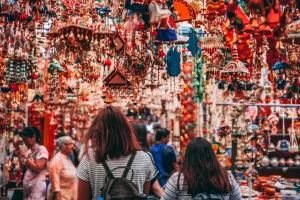
📷
Conclusion
In conclusion, art’s role in cultural exchange spans generations, continually evolving to reflect the changing dynamics of our interconnected world. By exposing individuals to different cultures, fostering shared experiences, challenging preconceptions, building bridges, and actively participating, art remains a catalyst for a more understanding and interconnected global community. As we navigate the future, embracing the potential of art in cultural exchange is key to fostering a more peaceful and united world.
The transformative power of art lies not only in its ability to bridge cultural gaps but also in its capacity to inspire empathy, provoke thoughtful conversations, and celebrate the diversity that enriches our shared human experience. In this ongoing journey of cultural exchange through art, each generation contributes to the ever-expanding tapestry of global understanding, promoting a world where creativity becomes a bridge that connects us all.
Key Takeaways
| Art’s Role in Cultural Exchange | Summary |
| Exposure to Different Cultures | Art serves as a window into diverse perspectives. |
| Shared Experiences | Engaging with art creates universal connections. |
| Challenging Preconceptions | Art challenges assumptions, promoting inclusivity. |
| Building Bridges | Artistic collaborations foster intercultural understanding. |
FAQs:
Can art truly challenge stereotypes and promote inclusivity?
Yes, art has the power to confront stereotypes by presenting alternative perspectives, fostering critical thinking, and promoting a more inclusive understanding of different cultures.
How has technology impacted art-based cultural exchange?
Technology and digital platforms have expanded the reach of art, providing opportunities for global dialogue and overcoming geographical barriers.
What role do museums and galleries play in cultural exchange through art?
Museums and galleries serve as cultural hubs, curating diverse collections and exhibitions that contribute to cross-cultural understanding and appreciation.
How can individuals actively participate in art-based cultural exchange?
Individuals can engage in cultural exchange by attending cultural events, supporting international artists, and participating in community art projects that celebrate diversity.
Are there specific art movements known for promoting cultural exchange?
Yes, throughout the years, movements like the Harlem Renaissance, Fluxus, and Global Street Art have significantly contributed to cultural exchange by embracing diverse influences and perspectives.
Topics
Cultural Exchange in Art: Bridging Generations Through Creativity
Introduction to Cultural Exchange in Art: An Overview
Ways Art Facilitates Cultural Exchange
Historical Context of Art in Cultural Exchange
Challenges and Opportunities in Art-Based Cultural Exchange
Conclusion
Key Takeaways
Frequently Asked Questions


